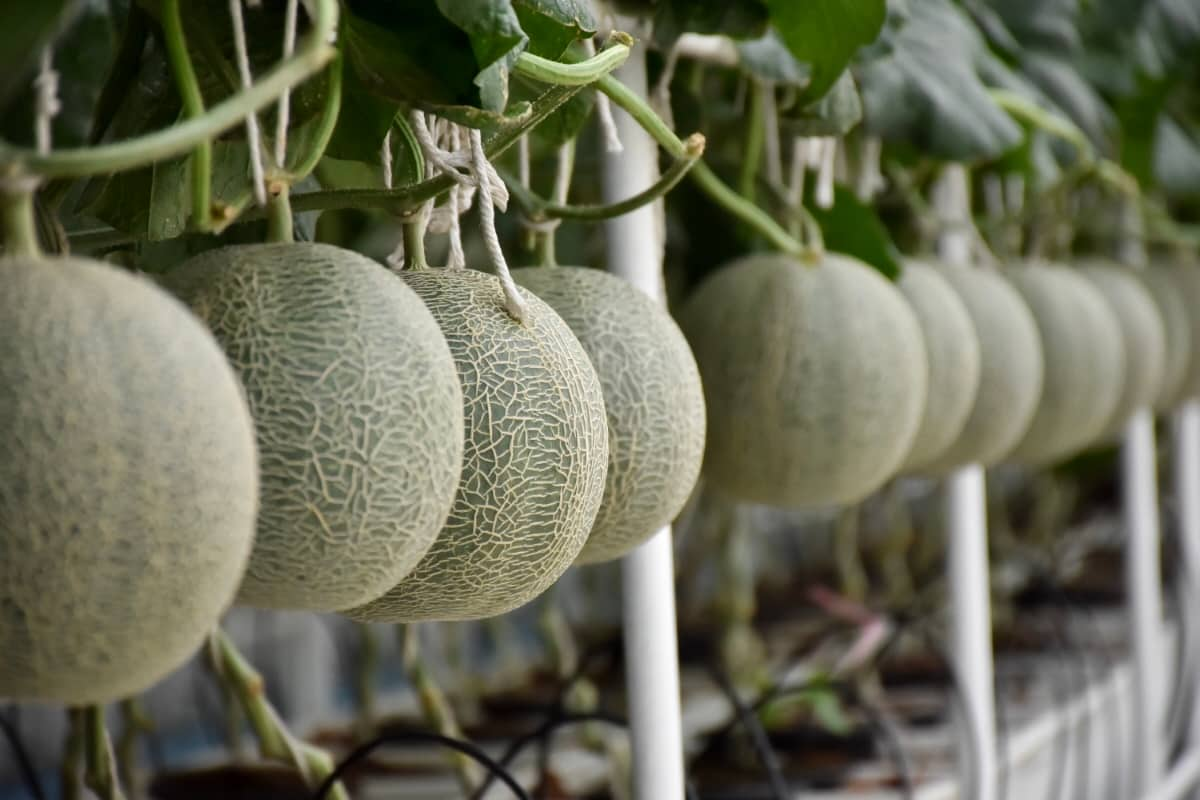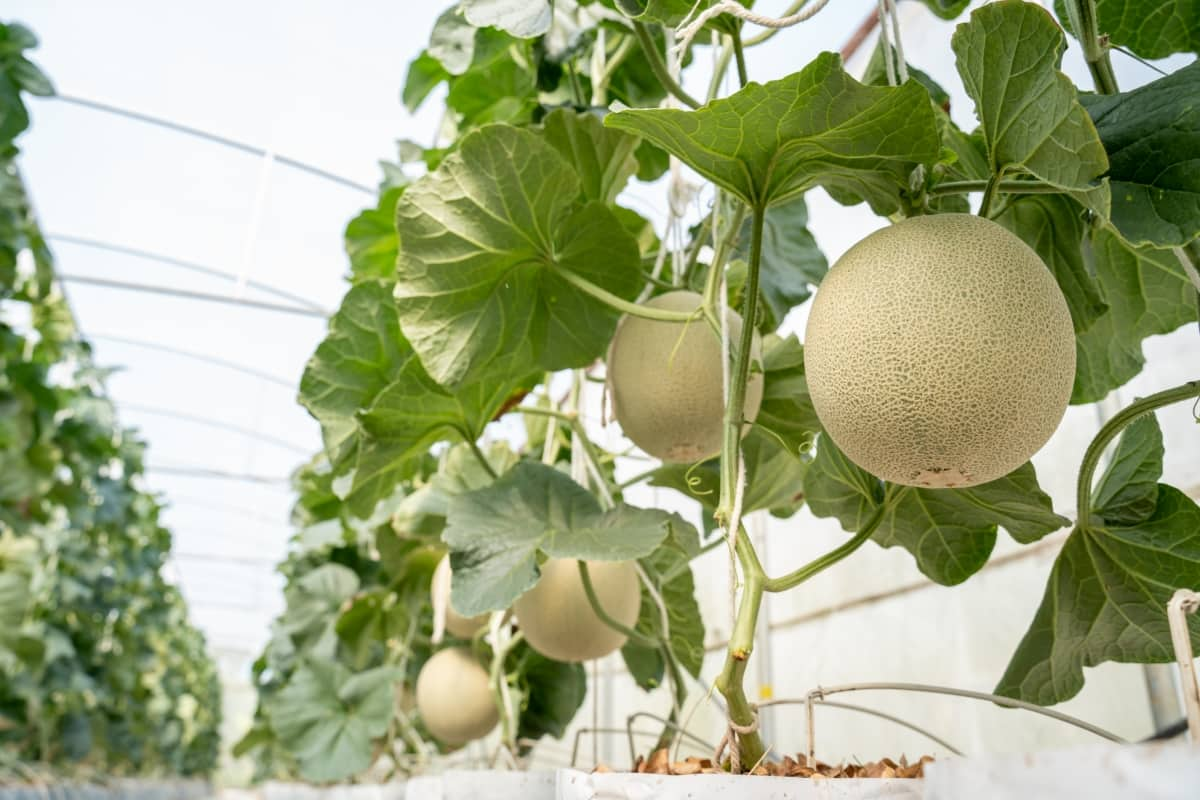Achieving optimal cantaloupe fruit size requires a strategic approach to cultivation. Proper care, nutrient management, and environmental considerations play pivotal roles in maximizing fruit growth. This guide explores key factors influencing cantaloupe development, offering insights into cultivation techniques that enhance fruit size. By understanding the intricacies of cantaloupe growth, growers can employ effective methods to optimize yields and produce larger, more flavorful fruits.

How to Increase Cantaloupe Fruit Size
Essential Nutrients for Maximizing Cantaloupe Fruit Growth
Cantaloupe nutrition for bigger fruits relies on a balanced blend of essential nutrients. Nitrogen, phosphorus, and potassium are fundamental elements that contribute to robust vine development and overall fruit quality. Micronutrients like magnesium, calcium, and boron play crucial roles in specific metabolic processes.
When choosing fertilizers for cantaloupes, a balanced NPK ratio of 5-10-10 is often recommended for cantaloupes’ growth stages to ensure efficient nutrient uptake. This strategic approach, aligned with regular soil testing and organic options, fosters optimal cantaloupe fruit size enhancement, yielding a bountiful and delicious harvest.
Innovative Irrigation Techniques for Larger Cantaloupe Fruits
Innovative irrigation techniques play a pivotal role in cultivating larger cantaloupe fruits, optimizing both water efficiency and fruit growth. Implementing strategic cantaloupe watering methods for large fruits involves precision and innovation. Drip irrigation systems, tailored to deliver water directly to the plant’s root zone, promote efficient hydration, minimize water wastage, and reduce disease risks.
Additionally, soil moisture sensors enable precise monitoring, allowing growers to maintain optimal hydration levels for cantaloupe plants. Mulching, another innovative technique, conserves soil moisture, regulates temperature, and suppresses weed growth, contributing to overall fruit development. By incorporating these cantaloupe fruit growth techniques, growers can enhance yield quality and quantity while conserving water resources for sustainable and productive harvests.
Optimizing Soil Quality for Increased Cantaloupe Size
Achieving larger cantaloupe sizes relies on optimizing soil with the right nutrients and maintaining an ideal pH range. Cantaloupe soil preparation for bigger fruits involves essential and major nutrients like nitrogen, phosphorus, and potassium, which are tailored to the specific requirements of your Cantaloupe crop. Conducting soil tests assists in identifying deficiencies and customizing fertilizer applications.
Also, maintaining the appropriate pH level, typically between 6.0 and 6.5, is crucial for nutrient availability. Amending the soil with organic matter, like animal manure or compost, enhances its structure and water retention capacity, fostering favorable conditions for cantaloupe growth. By adhering to these principles of soil optimization, growers can significantly contribute to cantaloupe fruit size improvement, resulting in a more abundant and desirable harvest.
Effective Fertilization Strategies for Bigger Cantaloupes
Organic, effective fertilization strategies are essential for cultivating larger cantaloupes, emphasizing sustainable practices that enhance fruit size naturally. Cantaloupe fertilization for bigger fruit size involves incorporating organic methods that nourish the soil and promote healthy plant growth. Utilizing well-rotted compost, composted manure, and cover crops enhances soil fertility, providing a gradual release of essential nutrients. Fish emulsion and seaweed extracts offer organic sources of nitrogen, promoting vigorous vine development.
In case you missed it: How to Grow Muskmelon/Cantaloupe in Greenhouse: A Step-By-Step Guide for Seed to Harvest

Vermicomposting, incorporating earthworm castings, enriches the soil with valuable micronutrients. Additionally, rotating crops and practicing green manure cover cropping contribute to soil health. These organic fertilization strategies not only foster larger cantaloupes but also promote environmental sustainability and soil vitality in cantaloupe large fruit cultivation.
Pruning Practices to Encourage Larger Cantaloupe Yield
Pruning practices play a crucial role in maximizing cantaloupe yield size, employing strategic techniques to encourage robust growth. Cantaloupe pruning techniques for large fruits involve targeted removal of excess foliage and lateral vines. Thinning out overcrowded areas enhances air circulation and sunlight penetration, fostering better fruit development. Regularly removing small or damaged fruits redirects energy towards fewer but larger fruits, contributing to overall size maximization.
By adopting these cantaloupe pruning practices, growers can create an environment conducive to larger fruit development. The emphasis on proper airflow, sunlight exposure, and nutrient allocation ensures a bountiful harvest of sizable and high-quality cantaloupes, contributing to successful cantaloupe fruit size maximization.
The Role of Climate in Enhancing Cantaloupe Fruit Size
Understanding the impact of climate on cantaloupe fruit size is vital for optimizing growth. Cantaloupe climate impact on fruit size encompasses factors like temperature range, sunlight, and humidity. Ideal temperatures, typically between 21°C and 32°C, promote optimal growth and fruit development. Consistent warmth encourages sugar accumulation, enhancing flavor.
Adequate sunlight exposure of 6-8 hours per day is essential for photosynthesis and fruit maturation. However, excessive heat can stress plants, affecting fruit quality. By recognizing and adapting to the specific climatic needs of cantaloupes, growers can foster optimal conditions for fruit growth. This knowledge contributes to effective cantaloupe fruit growth optimization, ensuring a successful harvest of larger and more flavorful melons.
Organic Approaches to Boosting Cantaloupe Fruit Dimensions
Embracing organic approaches is key to enhancing cantaloupe fruit dimensions sustainably. In organic cantaloupe farming for bigger fruits, prioritizing soil health is paramount. Utilizing organic compost, cover cropping, and natural amendments enrich the soil, fostering nutrient-rich conditions for robust growth. Employing organic fertilizers, such as compost tea and well-rotted manure, ensures a gradual release of nutrients. Implementing companion planting with beneficial herbs and flowers supports natural pest control.
Furthermore, organic pest management practices, like neem oil application, maintain a healthy crop without compromising fruit quality. These holistic, organic approaches contribute to cantaloupe fruit size expansion while promoting ecological balance in the farming ecosystem. By adopting these practices, growers can cultivate larger and healthier cantaloupes, meeting consumer demand for organically produced, flavorful fruits.
Pest and Disease Management for Healthier, Larger Cantaloupes
Effective pest and disease control methods are crucial for cultivating healthier and larger cantaloupes. Cantaloupe pest control for healthy big fruits involves several strategies.
- Companion Planting: Growing pest-repelling plants like marigolds and basil alongside cantaloupes helps deter harmful insects.
- Beneficial Insects: Introducing beneficial insects like lacewings, ladybugs, and predatory beetles can naturally control pest populations.
- Neem Oil and Soap Sprays: Organic solutions like neem oil and insecticidal soaps serve as effective deterrents against pests while being gentle on plants.
- Crop Rotation: Rotating crops helps disrupt the life cycle of soil-borne diseases and pests, reducing the risk of infestation.
- Fungicide Treatments: The application of organic fungicides, like copper-based sprays, can protect cantaloupes from common fungal diseases.
In case you missed it: 1-Acre Muskmelon/Cantaloupe Farming Cost and Profit Analysis: Cultivation Economics and Production Project Report

Regular inspecting for signs of pests or diseases, prompt intervention, and maintaining overall plant health through proper watering and nutrition contribute to cantaloupe fruit growth protection.
Advanced Agricultural Technologies for Cantaloupe Size Increase
Exploring advanced agricultural technologies for boosting cantaloupe size presents exciting possibilities. Cantaloupe growth technology for bigger fruits involves innovative approaches that leverage advancements in agriculture.
- Smart Irrigation Systems: Automated irrigation systems with sensors and real-time data analysis ensure optimal soil moisture levels, promoting consistent and efficient cantaloupe development.
- Genetic Modification: Research in genetic engineering aims to develop cantaloupe varieties with improved traits, including larger fruit sizes and enhanced resistance to pests and diseases.
- Vertical Farming: Controlled environment agriculture, such as vertical farming, allows for year-round cantaloupe cultivation, optimizing growth conditions and potentially increasing fruit sizes.
Adopting these advanced agricultural technologies represents a transformative approach to cantaloupe fruit size innovation, offering growers effective tools for maximizing yields and meeting consumer demands.
Cultivar Selection for Maximizing Cantaloupe Fruit Size
Selecting the right cultivar is a pivotal step in maximizing cantaloupe fruit size. Bigger cantaloupe varieties, coupled with strategic cultivation practices, contribute to effective fruit size enhancement. Select cantaloupe cultivars known for large fruit size, such as “Hale’s Best Jumbo,” “Ambrosia,” and “Athena.” These cultivars are renowned for their sweet flavor and robust growth. By carefully considering these cultivars, growers can proactively contribute to the success of cantaloupe fruit size enhancement, ultimately yielding larger and more desirable harvests.
In case you missed it: 6 Causes of Dying Cantaloupe Plant and How to Fix It?

Conclusion
In conclusion, achieving larger cantaloupe fruit sizes involves a holistic approach encompassing strategic fertilization, soil optimization, irrigation techniques, climate considerations, and advanced technologies. By integrating these practices and selecting appropriate cultivars, growers can successfully navigate the intricacies of cantaloupe fruit growth optimization, ensuring bountiful and sizable harvests.
- Feed Your Flock for Less: Top 10 Tips to Save on Chicken Feed
- Ultimate Guide to Ossabaw Island Hog: Breeding, Raising, Diet, and Care
- Hatching Answers: The Top 10 Reasons Your Chickens Aren’t Laying Eggs
- Eggs and Economics: Breaking Down the Cost of Raising Backyard Chickens
- Defend Your Greens: Proven Methods to Keep Iguanas Out of Your Garden
- Ultimate Guide to Cinnamon Queen Chicken: A Comprehensive Guide for Beginners
- Ultimate Guide to California Tan Chicken: Breeding, Raising, Diet, Egg-Production and Care
- Ultimate Guide to Marsh Daisy Chicken: Breeding, Raising, Diet, and Care
- 10 Types of Chicken Farming Businesses You Can Start for Profits